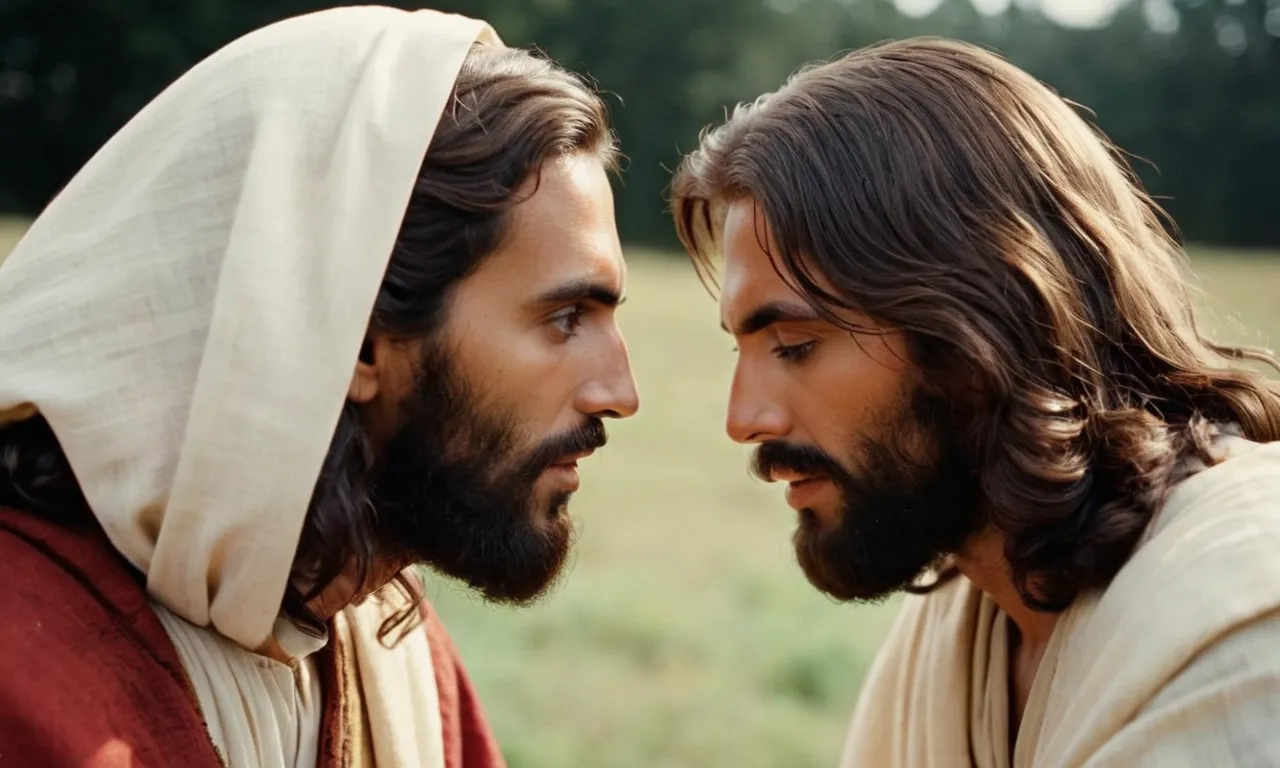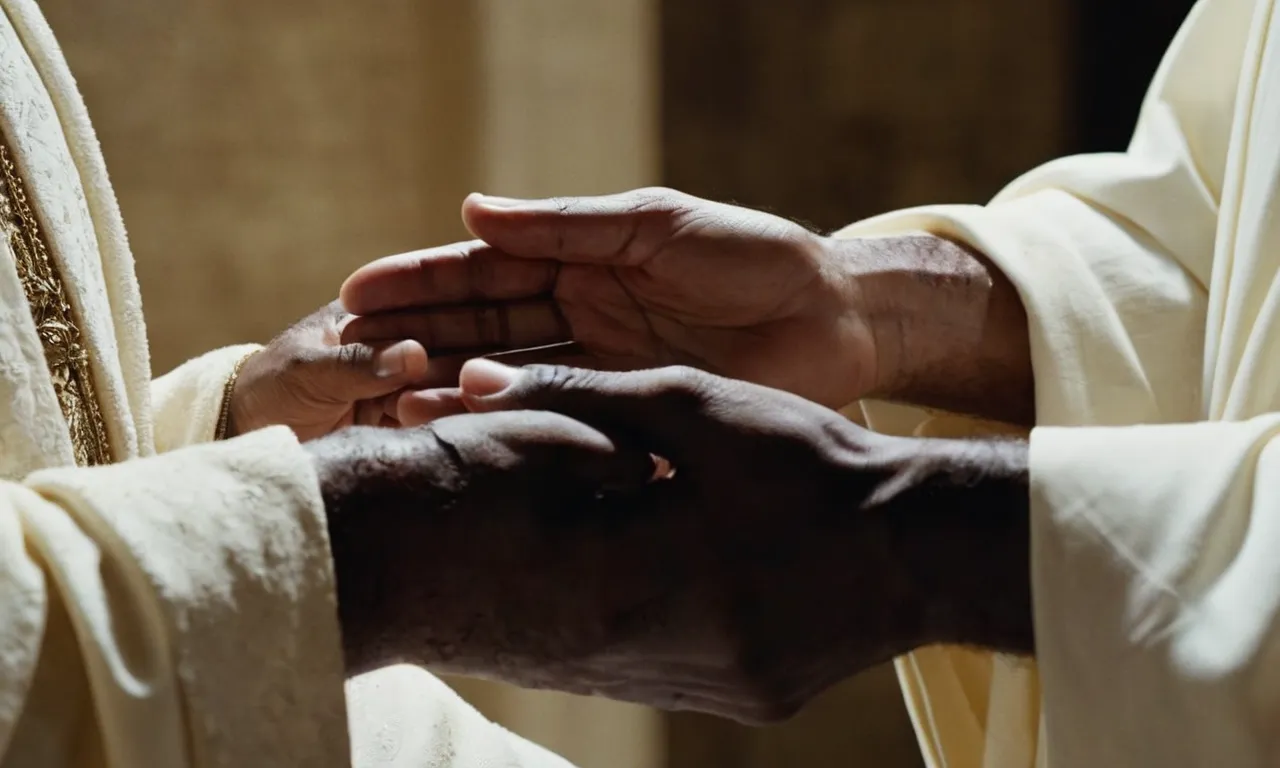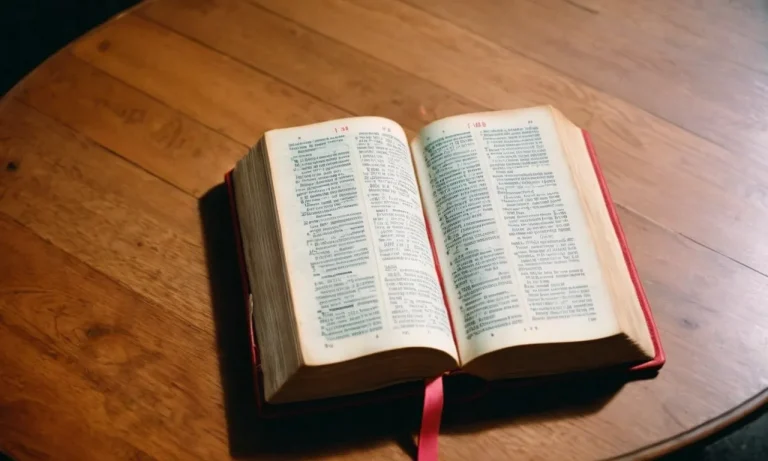What Happened To Doubting Thomas In The Bible
If you’re looking for the full story on Doubting Thomas, you’ve come to the right place. Thomas was one of Jesus’ twelve disciples, but he is most well known for doubting Jesus’ resurrection until he saw proof with his own eyes, earning him the nickname “Doubting Thomas.”
In this comprehensive article, we will examine Thomas’ story step-by-step, from his calling by Jesus to follow him, to his reactions after Jesus’ death and resurrection.
By the end, you’ll have a complete understanding of this disciple’s journey from doubt to belief.
Thomas’ Calling to Follow Jesus
Jesus Calls Thomas to be a Disciple
The Bible first mentions Thomas when Jesus called him to be one of the Twelve Disciples. This calling is recorded in Matthew 10:2-4, Mark 3:16-19, and Luke 6:13-16. Thomas was likely a Galilean fisherman, and he was chosen by Jesus to leave everything behind and follow Him.
Jesus saw great potential in Thomas and believed he could become a fisher of men.
As one of the Twelve, Thomas would be with Jesus throughout His earthly ministry. He would see Jesus’ miracles and hear His teachings firsthand. Thomas was receiving an amazing opportunity to learn from the Savior Himself.
However, this discipleship would also involve suffering, as Jesus made clear that His followers would face persecution and hardship.
Thomas’ Personality and Role Among the Disciples
The Gospel accounts portray Thomas as loyal but prone to doubt. In John 11, when Jesus decided to return to Judea where the Jews had tried to stone Him, Thomas bravely said to the other disciples, “Let us also go, that we may die with Him” (John 11:16).
Yet after Jesus’ resurrection, Thomas stubbornly doubted the testimony of his fellow disciples who had seen the risen Christ (John 20:24-25).
This mixture of courage and disbelief makes Thomas relatable. His story shows how the disciples struggled to grasp Jesus’ teachings and mission.
When Jesus spoke of going away to prepare a heavenly home, Thomas asked Him, “Lord, we do not know where you are going. How can we know the way?” (John 14:5).
Thomas voiced the confusion many felt but did not express.
Jesus chose Thomas not for his strengths but despite his weaknesses, just as He chooses ordinary people today. With patience and love, Christ called Thomas to rise above his doubts and discover the truth of who He was.
Thomas’ Reaction to Jesus’ Death
Thomas is Absent when Jesus Appears to the Disciples
According to the Gospel of John, Thomas was absent when the resurrected Jesus first appeared to the other disciples. The momentous event happened on the evening of the first Easter Sunday. The disciples were huddled together in some secret location in Jerusalem, fearing that they might suffer the same fate as their leader.
But Jesus suddenly appeared among them, showing the wounds in his hands and side to prove his identity. The disciples were awestruck and overjoyed to see their Lord risen from the dead.
The Bible says that Thomas, however, missed this wonderous first appearance. Why he was not with the others we do not know for sure.
Perhaps he was out trying to gather supplies for the group or scouting to see if it was safe to come out of hiding. But for whatever reason, doubting Thomas did not witness what the other disciples did that evening.
This would lead to a crisis in faith for the apostle down the line.
Thomas Doubts the Testimony of the Other Disciples
When Thomas did later rejoin his fellow disciples, they excitedly told him the news: “We have seen the Lord!” (John 20:25). An incredible story to be sure.
Who wouldn’t doubt such an outrageous claim? People simply did not rise from the dead in those days.
Thomas flatly refused to believe it, even coming from his closest companions. He essentially called them all liars or fools for believing what they claimed to have witnessed.
Thomas insisted that unless he could physically touch the crucifixion wounds himself, there was no way he would accept their far-fetched tale. He needed empirical, tangible evidence. Modern readers might see Thomas as scientifically minded in this regard.
But his skeptical stance also revealed a break in trust between Thomas and the disciples. This lack of faith must have deeply concerned and disappointed the others.

Jesus Appears to Thomas
Jesus Offers Thomas Proof of His Resurrection
After Jesus’ crucifixion, the disciples were gathered together in a room, grieving the loss of their Lord. Though some had seen the empty tomb and even seen Jesus alive, Thomas was skeptical.
“Unless I see the nail marks in his hands and put my finger where the nails were, and put my hand into his side, I will not believe,” he declared (John 20:25).
Thomas was demanding physical proof of Jesus’ resurrection.
Eight days later, Jesus miraculously appeared to the disciples again, and this time Thomas was with them. Jesus walked up to Thomas and invited him to touch the scars of the crucifixion. “Put your finger here; see my hands. Reach out your hand and put it into my side.
Stop doubting and believe,” Jesus said (John 20:27). Jesus did not rebuke Thomas for his doubt, but lovingly offered the proof Thomas demanded.
Thomas’ Declaration of Belief
When Thomas saw and touched Jesus’ wounds, scripture says he made the most powerful declaration of belief recorded anywhere in the Bible: “My Lord and my God!” (John 20:28). His doubt had turned to rock-solid belief.
From this encounter, Thomas came to realize that Jesus was far more than just a great teacher and healer; Jesus was divine, worthy of worship and devotion.
The resurrected Christ standing before him was indeed the Lord and Savior of the world.
Thomas’ reaction is a reminder that God does not condemn honest doubt or sincere questioning. Jesus did not reject Thomas for not believing the testimony of others who had seen Him alive. Rather, Jesus made a special resurrection appearance just for Thomas, providing the evidence Thomas needed.
This transformed Thomas from a skeptic to a zealous missionary who spent the rest of his life spreading the gospel across the world.
The story of Doubting Thomas encourages us to voice our uncertainties to God in prayer.
It also challenges believers not to be too harsh on skeptics, but to patiently provide the reasonable answers and evidence that doubters need to come to faith, just as Jesus did for Thomas.
With the right evidence, doubt can lead to deep and unshakable belief.
Jesus’ Response to Thomas’ Doubt
Jesus Affirms Thomas’ Belief
After his resurrection, Jesus appeared to his disciples who were gathered together in a house with the doors locked. Thomas was not present with them.
When the other disciples told Thomas they had seen the Lord, Thomas responded that he would not believe unless he could see and feel the nail marks in Jesus’ hands and put his hand into Jesus’ side where he had been pierced (John 20:24-25).
Eight days later, Jesus again appeared to his disciples with Thomas present this time. Jesus invited Thomas to touch his wounds and stop doubting, but instead Thomas declared “My Lord and my God!” (John 20:26-28).
Jesus affirmed Thomas’ belief in him as Lord and God but also said that those who believe without seeing are blessed (John 20:29).
Jesus’ Teaching on Belief Without Seeing
Jesus mildly rebuked Thomas for his stubborn unbelief and affirmed a greater blessing comes to those who believe without requiring physical proof.
Though Thomas’ doubt was genuine and he desired personal verification before believing the incredible news of Jesus’ resurrection, Jesus taught that faith based on testimony and God’s word is greater.
Jesus performed many miraculous signs in his earthly ministry so people would believe in him (John 20:30-31).
However, after his resurrection Jesus expected his followers to believe based on the witness of the Scriptures and the testimony of others rather than personal observation.
He told Thomas he was blessed for believing, but expected Thomas to trust the word of his fellow disciples.
Jesus pronounced a blessing on all subsequent believers who would entrust their lives to him without requiring visible verification. He calls his followers today to examine the historical evidence and testimony about him in Scripture and believe based on the witness of the apostles he commissioned to testify about him.
Conclusion
Thomas’ journey from doubt to belief has become an integral part of the resurrection story. His initial skepticism gives hope to all those who struggle with doubt, as Thomas’ story shows that honest questioning can lead to sincere faith.
In the end, Thomas emerged as a devoted follower of Christ, willing to give his life for the gospel. His story reminds us that doubt is not the opposite of faith – in fact, they often go hand in hand on the path to belief.








